We support Australia’s target of net-zero emissions by 2050 through the use of responsible, effective and properly-considered clean-tech initiatives by governments, businesses and the general community.
However, the pursuit of a clean environment cannot be at the cost of the environment itself. We are committed to preserving our world-renowned pristine coastline and public amenity AND embracing renewable energy.
Responsible Renewables welcomes the confirmation by Minister Chris Bowen made on 31 August 2023 that the “region west of Wilsons Promontory would not be considered further for declaration” based on the unacceptable environmental risks to progressing with offshore wind in this region. This decision was made in consultation with the Victorian Government and thus we hope to see the Victorian Government cease funding any developers for exploration works in this area.
We acknowledge the Government’s recognition of the environmental risks posed by offshore wind infrastructure. We also thank the efforts of the many groups (both community and environmental) that have not ceased in their efforts to ensure we do not destroy the environment in our efforts to save it.

Responsible Renewables remains committed to effective and properly-considered clean-tech initiatives and protecting our beautiful and pristine coastline for future generations to enjoy.
Since the Gippsland zone was declared, the Federal Government has proposed three new renewable energy zones – Hunter, Southern Ocean and Illawarra.
The declared Hunter region covers 1854 square kilometres between the Central Coast and Port Stephens (see picture below). It is 20km from the coast in the north and 35km from the coast in the south. The wind infrastructure in this zone has been limited to 260m in height (which is less than other projects that can reach 350m). The proposed area was substantially reduced by concerned communities – particularly at Norah Head – to counter concerns about the environment, aviation safety, shipping and visual impacts. Responsible Renewables was concerned that the Norah Head community was not aware of the proposed zone until days before submissions ended – a failing in community consultation similar to the Gippsland region.

The Illawarra region has also been proposed from Wombarra to Kiama with the total proposed zone being 1,461 square kilometers in size and 10km off shore at Wollongong and 30km off shore at Kiama. Submissions are open until 16 October via this link.

The Southern Ocean renewable energy zone has been proposed (see below) and community submissions are welcomed until 31 August 2023. It extends from Warrnambool in Victoria to Port MacDonnell in South Australia. It is generally 10km from the coast. We encourage you to have your say (via this link) and can put you in contact with local groups should you want further information. This article provides some further context.
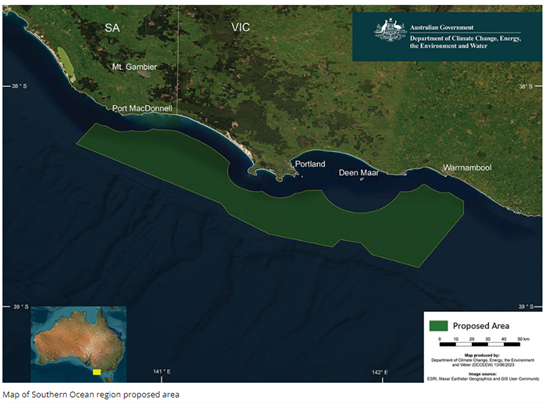
We remain committed to renewable energy and Australia’s net zero target – but not at the cost of the environment itself. We urge communities to become informed about the projects in their area and provide feedback to the Federal Government.
On 19 December, the Minister for Energy (The Hon Chris Bowen) declared 15000 sq kms east and south of Wilsons Promontory as the OEI-01-2022 zone for offshore renewable energy . Whilst reduced from the proposed 27,500 sq km, this area is still 6 times the size required to fully meet Victoria’s power target in 2040.
This Declared Zone is made up of the three parts as depicted in pink on the map. The green area depicts the original proposed zone for comparison.
The Minister has not formally declared any zones west of the Prom and has committed to work with the Victorian Government in 2023 to consider the area for the development of offshore renewable energy. If you want to read the verbatim press conference, you can here . Given the size of the zones that have been formally declared, it is unclear as to why the Government would seek more on the west side of the Prom.
Responsible Renewables remains concerned about the opaque nature of this commitment to further consider the Gippsland coast west of Wilsons Prom for developing offshore electricity infrastructure.
We are unsure of the formal process for any further community consultation, we do not understand the process by which zones may be formally declared, and we are uncertain of the roles and priorities of the State and Commonwealth Governments. The previous process was defined by the Offshore Infrastructure Act – whereas the process from here is unclear.
Responsible Renewables remains committed to advocating for a transparent, comprehensive and genuine consultation process with both the community and experts, and will continue to seek engagement with government. We remain committed to renewable energy and Australia’s net zero target – but not at the cost of the environment itself.
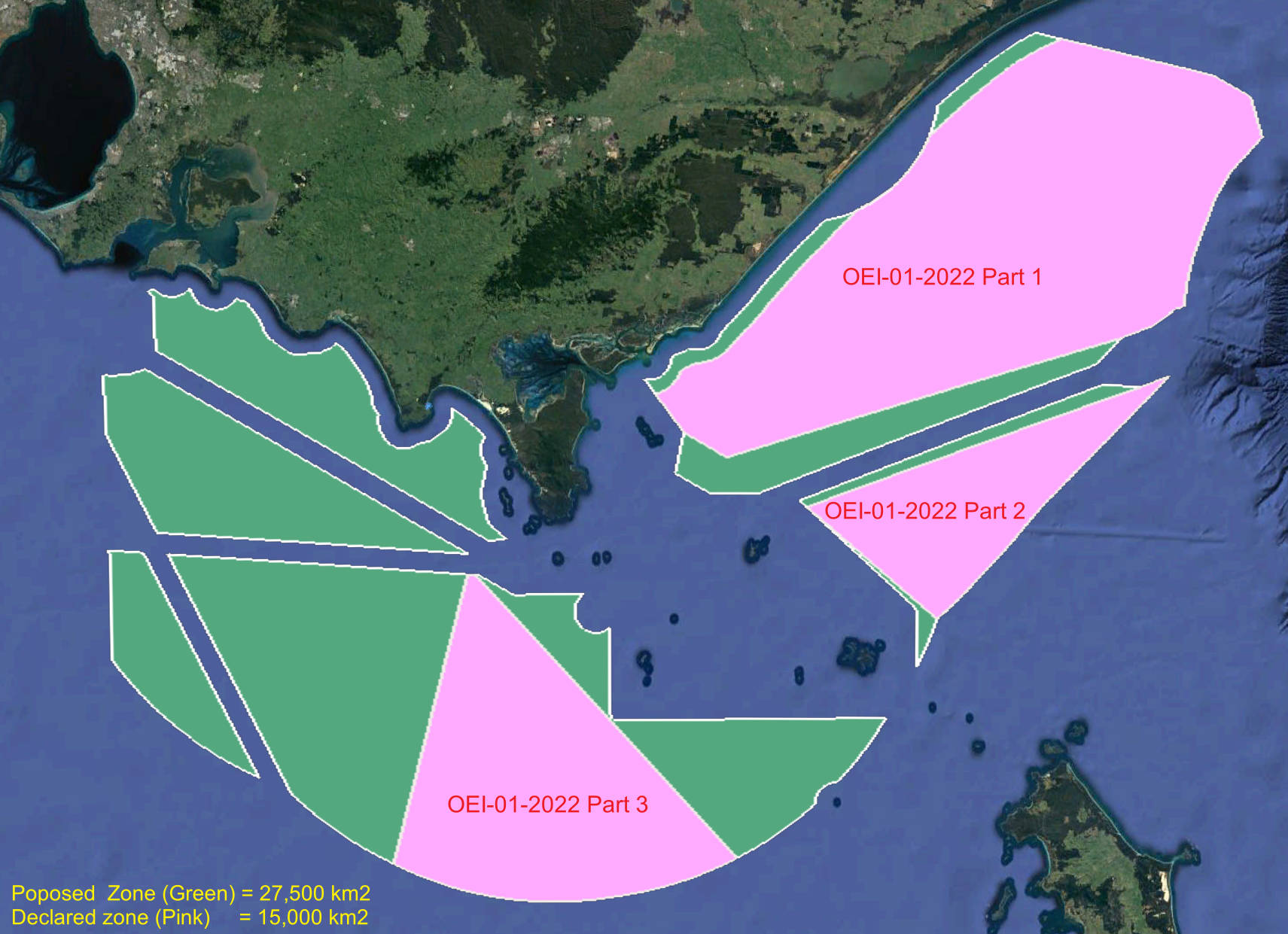
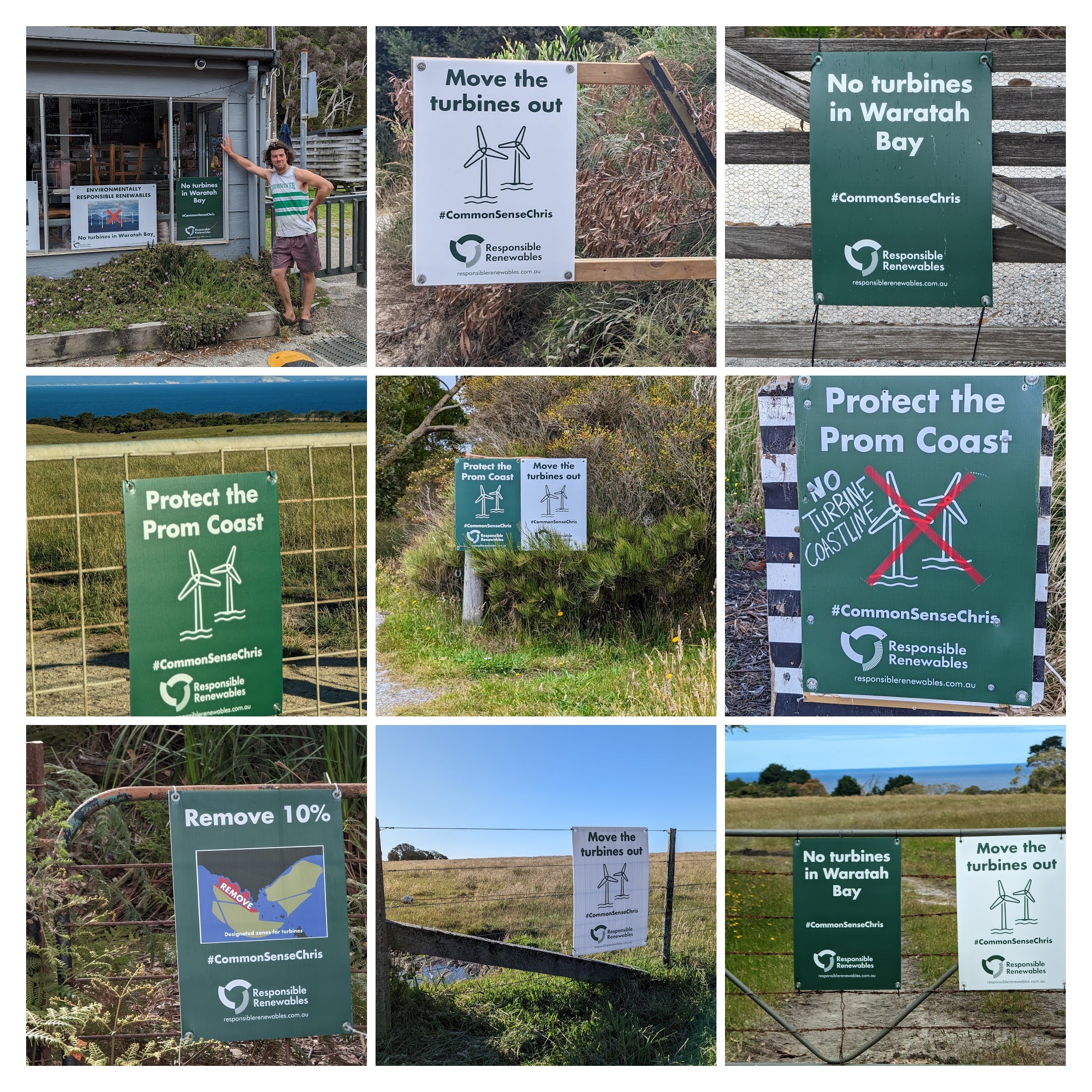
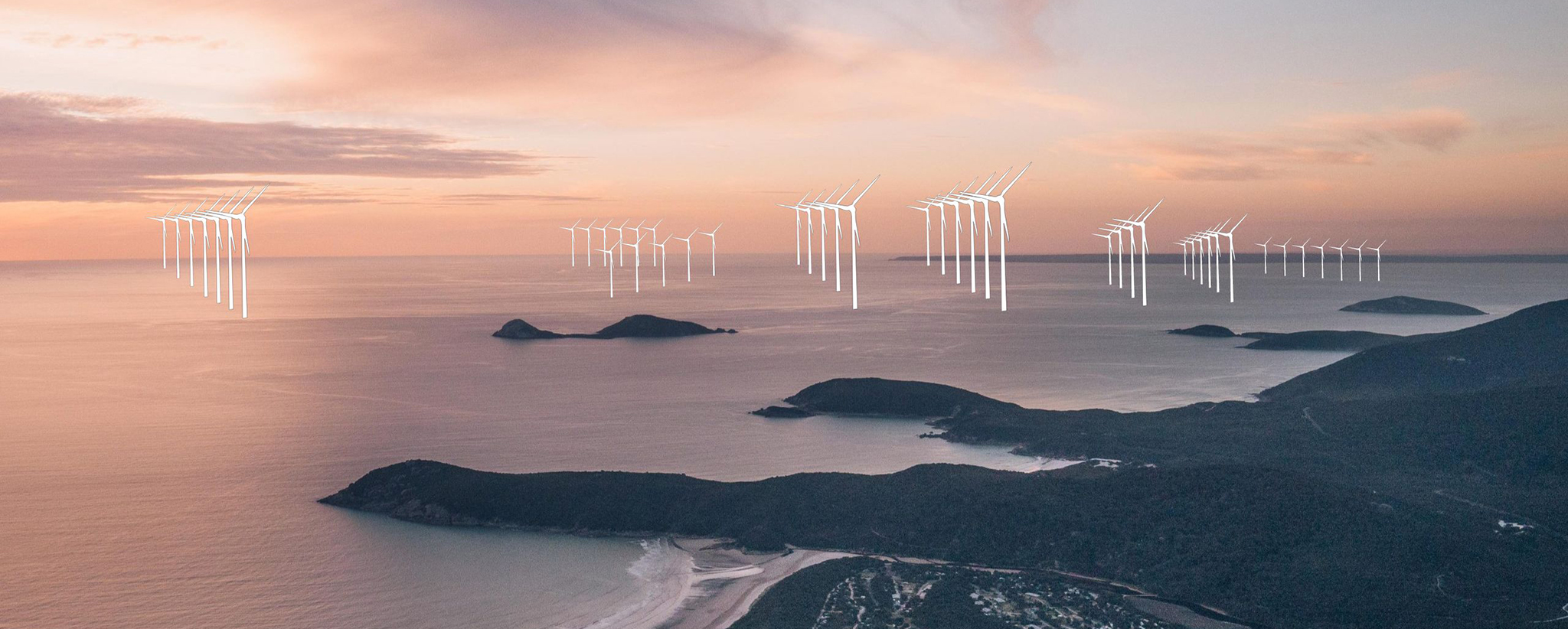
Australian Commonwealth waters in the Bass Strait off Gippsland have been identified for substantial wind energy infrastructure investment, with myriad zones proposed to house hundreds of 260-plus metre turbines only 5.5 kilometres offshore.
The Federal Government’s Department of Industry Science and Resources entered a period of ‘consultation’ on the plans from August 5th to October 7th 2022—a process of which few local people, businesses or visitors were aware.
Late 2022 looms as a milestone in the planning process with areas to be ‘declared’, meaning feasibility licenses will be granted to overseas investment consortiums by the Minister for Climate Change and Energy, the Hon. Chris Bowen.
The area from Phillip Island to Wilsons Promontory is causing significant concern with local community groups, businesses and other parties, including national park bodies and environmentalists. There are concerns that two of the planned zones in the proposal may not meet requirements of the EPABCA 1999, and that the erection of turbines so close to Waratah Bay’s shore has the potential to cause significant damage to the biologically important area and global ocean refuge.
"The erection of turbines in the shallow waters of Waratah Bay is an extraordinary and unnecessary overreach with the potential to cause irrecoverable harm to the biologically important area, along with a desecration of the local amenity."
Robert Boelen
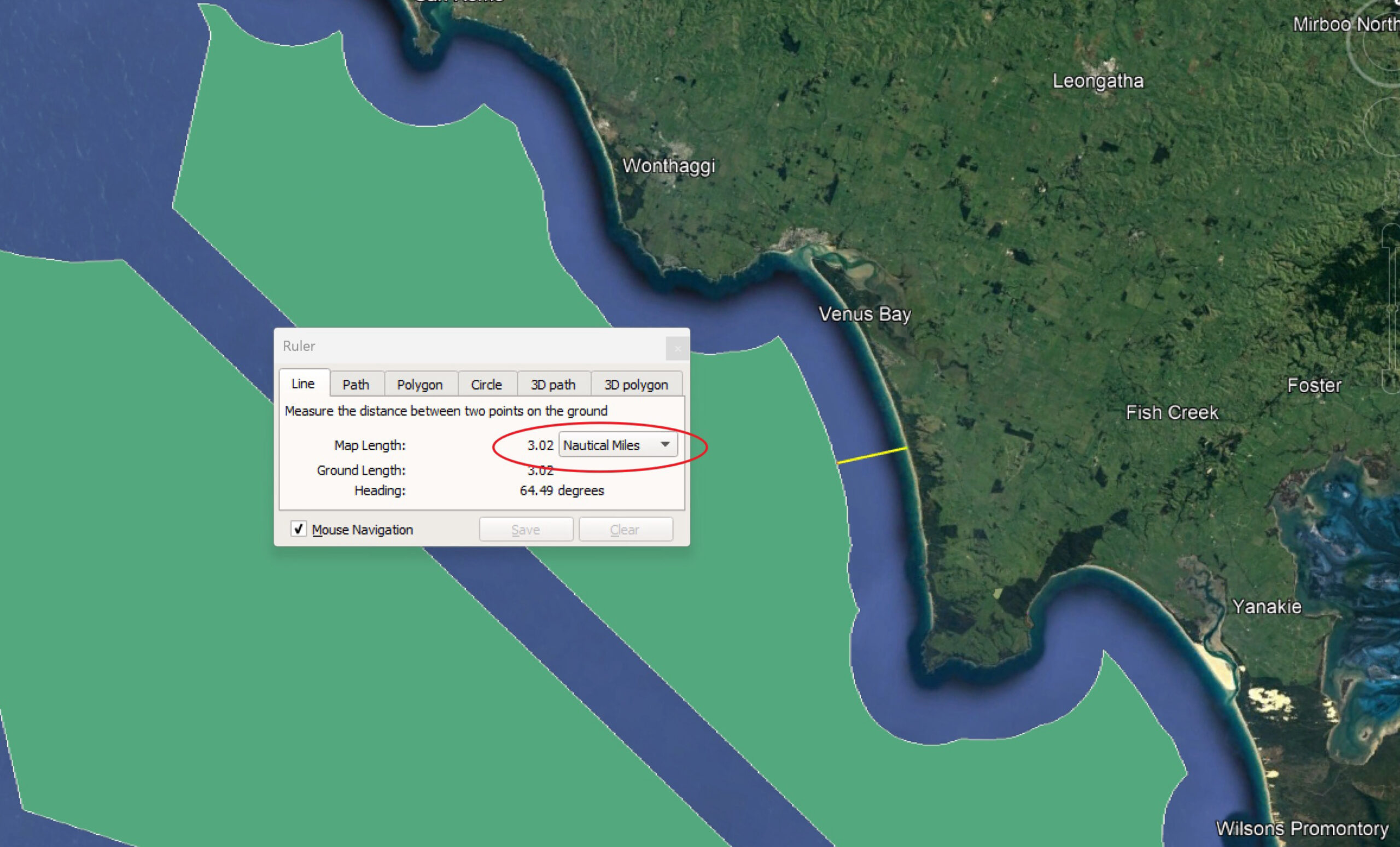

It is believed the proposal would severely impact local amenity and tourism. With tourism a significant contributor to the Gippsland economy, contributing more than $835 million and employing over 11,000 people in 2019/20 alone, this is a huge concern for many local businesses, individuals and visitors to the region.
"The threat of severe environmental impact to our beautiful and beloved coastline is hugely concerning, as are the oversights and oversimplifications in the proposal for the project."
Laura Jennings
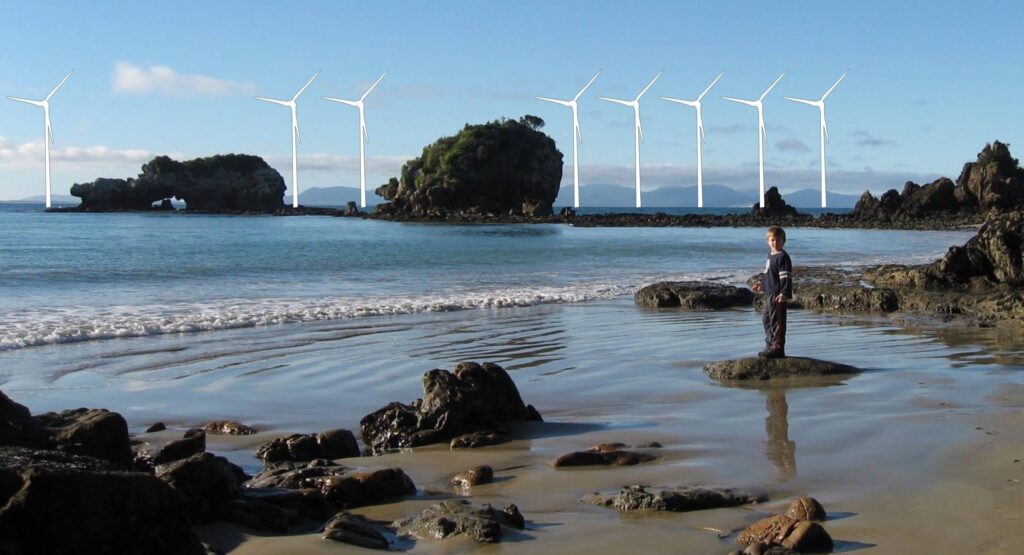
Responsible Renewables is a community organisation calling on the Senate Standing Committee on Environment to launch an inquiry into the granting of licenses and the lack of process by the Department of Industry, Science and Resources.
However, the pursuit of a clean environment cannot be at the cost of the environment itself.
The sheer size of the turbines, coupled with their proximity to the coastline, is a threat to the local environment and public amenity.
With some towers standing at up to 340 metres tall, local communities will be forced to live with what is, essentially, a coastline of Eureka Towers.
With the lifespan of a wind turbine a mere 20-25 years, the proposal could see severe and long-lasting environmental and community impacts for a zone that would be redundant by 2050.
There is a potential for further impact beyond the zone’s redundancy in 2050, with reports suggesting that turbines overseas are cut at the base once decommissioned. This would be hugely damaging to the marine life in the area and is something we simply cannot afford to happen here.

Like other natural wonders across Australia, Wilsons Promontory National Park and its pristine coastline must be protected at all costs for the sake of the millions of people who visit each year, the communities that live there, the flora and fauna that call it home, and for future generations to come.
To build massive wind turbines so close to the coast of Wilsons Promontory is akin to building them next to the Twelve Apostles, Uluru or the Great Barrier Reef.
Wilsons Promontory National Park and Marine National Park are Victoria’s largest coastal wilderness and marine area and home to humpback whales, dolphins, penguins, wombats, kangaroos and many more amazing creatures. It is vital that bays around The Prom and Bass Coast remain sanctuaries for the animals that call the area home.
Turbines should never be erected in a location that will destroy a national park and the life within.
"This can't be acceptable to anyone who cherishes the unique and extraordinary beauty of our iconic natural wonders."
Laura Jennings
The Victorian National Parks Association has already identified critical issues relating to pathways for humpback whales, calving and breeding for Southern Right Whales, the world’s largest colonies of fur seals and little penguins, and great white shark nurseries.
There may be ways to develop wind turbines that do not put the unique and diverse biodiversity of Wilsons Promontory at risk. For example, turbines could be erected further offshore (30kms) to reduce the impact of the development on more fragile, near-shore coastal environments.
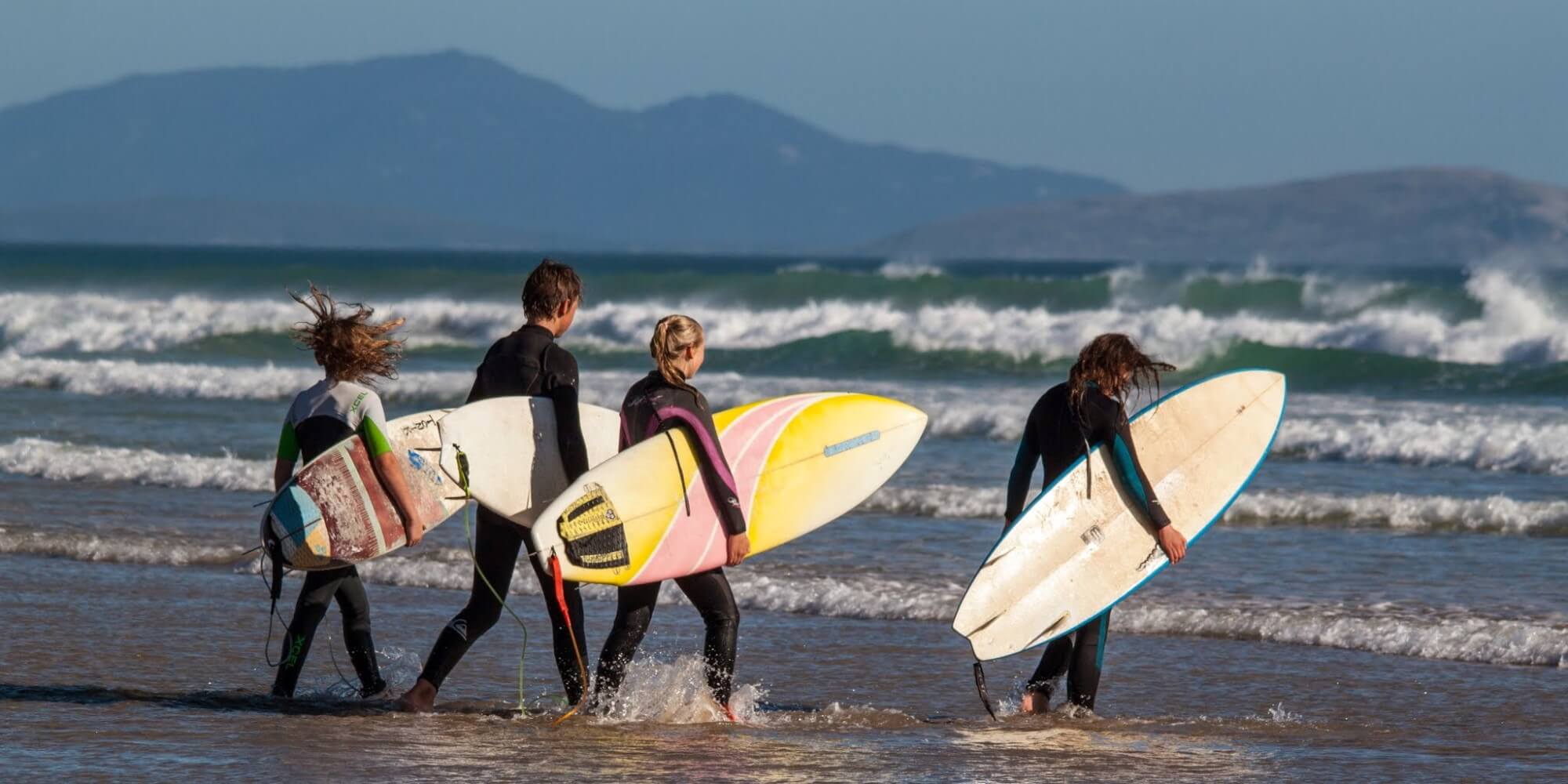
We recognise that offshore wind has its place in Australia and that, in principle, establishing renewable energy zones in the Bass Strait makes sense.
However, the proposal to site massive wind turbines in close proximity to the coastline is deeply concerning, given the potential risks and the fact that the full picture of the environmental impact of the project is unknown.
It is not acceptable to say that environmental issues will be looked at later when untold damage could occur in the meantime.
It’s clear that what was a ‘quasi’ consultation process has failed in its basic purpose – to provide a genuine opportunity for insights and input from all quarters of the community in order to arrive at a properly-informed view.
"The process and eight-week timeframe has all the hallmarks of a government trying to expedite an outcome without regard for genuine community consultation. It’s critical that, ultimately, the process doesn’t allow itself to fall victim to groups and individuals whose primary interest are profits over protecting our unique natural wonders."
Robert Boelen
That’s why we’re calling for a Parliamentary Inquiry into the consultation process – one which ultimately allows for proper, thorough and genuine consultation with the community, and ensures that our beautiful coastline and flora and fauna who call it home remain front-of-mind and protected.
